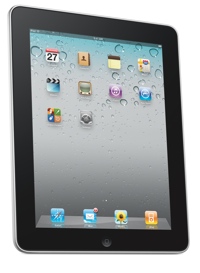In the 15 months since the introduction of the iPad, competitive tablet manufacturers still can’t match the design efficiency of Apple Inc.’s groundbreaking product, according to an IHS iSuppli (http://www.isuppli.com) teardown analysis of eight tablet models from information and analysis provider IHS.
“Since Apple controls both the operating system and hardware design of the iPad, it is able to attain design efficiencies that other tablet manufacturers cannot,” saysWayne Lam, senior analyst, competitive analysis, at IHS. “These efficiencies become obvious in areas like the memory and the battery, where Apple maintains advantages in cost, space savings and performance compared with every competitor in the business.”
Other tablet makers employ operating systems from third-party firms — such as Google., which provides the Android software used in most competitive products on the market today. Many of these tablet makers also outsource the blueprints of their products to third parties, employing reference designs and design services from contract manufacturers.
This contrasts with the model employed by Apple, which uses its own operating system and maintains tight control of its design, components and contract manufacturers.
“Apple takes a vertically integrated approach to its products, from the operating system to the user interface, to the hardware design, down to the selection of individual parts used in the device,” Lam notes. “For example, Apple even uses its own applications processor design in both the iPad and iPad 2. In contrast, Android tablet makers buy those capabilities from the likes of Nvidia, Texas Instruments and Qualcomm. This gives Apple greater control in multiple areas of product development.”
Apple’s control over the operating system allows it to reduce costs by limiting the quantity of memory in the iPad. In the current-generation iPad 2, the density of synchronous dynamic random access memory (SDRAM) is 512 megabytes — half that of the 1 gigabtye used in competitive designs. This memory density reduction results in a nearly US$14 reduction in the BOM of the iPad 2 compared to other tablets, according to IHS iSupplie. Likewise, the original iPad contained half as much SDRAM as comparable competitive devices with single-core applications processors.
“The iPad’s efficient memory usage stems from the fundamental difference in the architecture of the operating system,” Lam says. “Apple’s iOS handles multitasking differently than other tablet operating systems, allowing it to reduce the amount of memory required to support the microprocessor.”
Also, Apple’s tight management of its product design, software integration and component selection also allow the iPad’s battery to be the thinnest of all competing tablet designs while still having the largest capacity. Extensive teardown research also reveals how Apple is setting the pace in the tablet market in the areas of pricing and screen size, says iHS iSuppli.
Apple established the sweet spot for tablet pricing, pegged at $500 for the Wi-Fi version of the Apple iPad that included 16 gigabytes of NAND flash memory. Samsung reinforced this pricing standard with the 16-gigabyte version of the new Galaxy Tab 10.1 model. Other tablets such as the BlackBerry Playbook from Research in Motion and the TouchPad from Hewlett-Packar have gravitated toward that price point as well.
Apple also is setting the standard for display sizes, with the iPad’s 9.7-inch screen becoming the default standard in the market, notes iHS iSuppli. Although some tablets have been introduced with screens in the 7-inch range, notably RIM’s BlackBerry PlayBook and the upcoming HTC Flyer, the number of designs in the market with 10.1- and 9.7-inch displays have been more plentiful, says the research firm.

